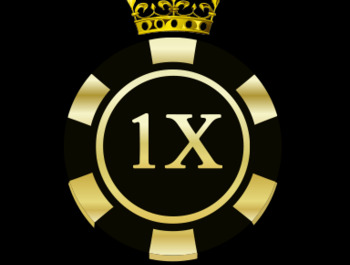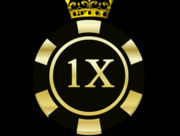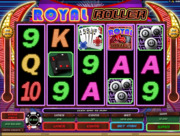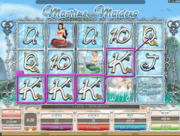Blackjack Rules - Learn Rules of Blackjack Game
Splitting Pairs
If the first two cards that the dealer gives you are the same denomination (two threes, two sixes, two Queens, etc.), you can decide to treat them as two separate hands on your next turn. However, you will have to match whatever bet you placed on your original card for the second one. You will then play the hand on your left by either hitting it one or more times OR by “standing” (stopping on your current hand). After doing so, you can play the hand/card on the right side. In effect, you are then playing two hands simultaneously, which could potentially lead to some big winnings if both hands beat the dealer’s. Note that if the first two cards you are dealt originally are a pair of aces, you will only be entitled to a maximum of only one card per Ace.
Doubling Down
If the first two cards you are dealt equal 9, 10 or 11, you can double your original bet on your next turn. The dealer will give you one card, which you must place face down on the table. You are not permitted to see what this card is until all the bets are settled at the end of the hand. If you originally get a pair of fives, you have several choices: you can split it, double down or just play it normally. Unlike you (the player), the dealer cannot split or double down his hands, so in this regard the rules are somewhat in your favour.
Surrender
If you are concerned that the first two cards dealt to you will not amount to much (i.e. either a low value or a high likelihood that you will bust after getting another card), then you have the option of surrendering. While this exit strategy comes at a cost (50% of your wager), sometimes it’s the best course of action. After all, what’s worse—losing half of your money or losing all of it?
Insurance
If the dealer’s hand shows an Ace, he will offer the player(s) an optional side bet known as “insurance”, which pays out 2 to 1 (i.e. double your wager). This means that you are actually betting that the dealer’s “hole card” (the one that is face down) is worth 10 points, meaning his total hand value is 21—a blackjack. If the dealer checks his hole card and sees that it does in fact give him a blackjack, he will turn it over and, provided that no other players have a blackjack as well, win that round. Therefore, buying insurance in this kind of situation can balance out your loss with a win.
Variations of Blackjack
Although Blackjack is fairly straightforward, there are several variations of the game that are regularly played at casinos and online casinos around the world. For example, the game can be played with anywhere from one to eight decks of standard 52-card decks. However, other variations can have slightly different rules, and some of these will appeal to certain punters while others will appeal to other punters. Some of the most popular variants of Blackjack are explained below.
Vegas Strip Blackjack
The main rules of Vegas Strip Blackjack include the dealer having to immediately check for a blackjack anytime he/she has shown either an ace or a card that is worth 10 points. In addition, doubling down (as explained above) can be done with both cards, regardless of what their initial score is. Punters can split up to three times and double down after doing so each time; however, they are allowed to split just one time if they get Aces. Finally, Aces that are split and followed with a card worth 10 points are NOT considered to be a blackjack, and late surrender is usually not allowed.
Atlantic City Blackjack
This Blackjack variant is very similar to its cousin in Las Vegas, as it uses almost all of the same rules. There are two key differences, however:
- Atlantic City Blackjack is played with 8 standard decks of cards (instead of 2, 6 or 8)
- Late surrender is permitted.
European Blackjack
This Blackjack variant is played with four decks, and the dealer will always stand when he/she has a (soft or hard) hand worth 17 points. Splits are limited to just one time, although if you split Aces, you can take an additional card. Note, however, that if your split Aces result in a card worth 10 points, you don’t get a blackjack—you only get 21 points. European Blackjack give punters the option of purchasing insurance whenever the dealer reveals an Ace, and the game pays out 3 to 2. The betting takes places before the dealer hands out the cards. Punters are permitted to double down when they have a hand worth 9, 10 or 11 points, but they cannot do so after a split or after being dealt a blackjack. Finally, surrendering is not permitted in European Blackjack.
Spanish 21 Blackjack
This variant of Blackjack is quite generous towards punters, as it has quite a few rules that are very favourable. For example, punters can double down any number of cards, late surrender, always win when they have a blackjack or another hand equalling 21 points, and receive various payout bonuses for hands of five cards or more that equal 21 points. One key difference in this type of Blackjack is that the deck is stripped of all “10” cards; face cards, of course, are still included.
Perfect Pairs Blackjack
This particular Blackjack variant allows punters to make a side bet on the first two cards that they are dealt. Depending on the exact type of pair that you receive, your payout will vary. For example, if your pair consists of mixed suits and mixed colours, you might get a payout of 5 to 1. If your pair of cards are the same colour but different suits, you might get a payout of 10 to 1. And if your pair is “perfect”—meaning it is the same colour and the same suit—you could get a payout worth as much as 30 to 1! While these payouts are a very appealing aspect of this version of Blackjack, just remember to not bet on them too often, as the house has an advantage of about 6% on these types of bets.
Pontoon Blackjack
Similar to Spanish 21, Pontoon Blackjack starts with the dealer’s two hole cards being face down. Because as a punter you are given limited information here, the casino will usually give you better odds (e.g. 2 to 1 instead of 3 to 2). A pontoon is a hand that is made up of two cards that add up to 21 points, and this will usually pay 2 to 1. In Pontoon Blackjack, the dealer wins all ties, and there is also another way for punters to win that is known as “a five-card trick”. What this means is you have five cards in your hand that add up to 21 points or less, and this kind of hand beats a dealer’s non-pontoon 21-point hand.
Blackjack Switch
This Blackjack variant is more complex than standard Blackjack, as it gives punters the option of playing two hands separately. They can also switch the second cards that they were dealt to each hand, potentially giving them a major advantage over the original hands that were dealt. If you get the same total as the dealer, you get your stake back (i.e. you don’t win or lose, known as a “push”). Furthermore, if a dealer’s hand is worth 22 points, it also results in a push against all other hands that didn’t bust. Finally, a blackjack only pays out even money, not a bonus payout like in other Blackjack variants.
Chinese Blackjack
This variant of Blackjack, also known as 21-Point, Ban-Nag, Hokkien and Ban-Luk, usually uses only two standard 52-card decks. Other than this requirement, the main difference in Chinese Blackjack is that the value of Aces will vary depending on the number of cards that you have in your current hand. If you only have two cards, then you can choose to have the value of an Ace be either 10 or 11 points. If you have three cards in your hand, then an Ace is worth either 1 or 10 points. Finally, if you have four cards, the value of your Ace drops to only 1 point. If you have two Aces in your hand, then you win automatically.



































